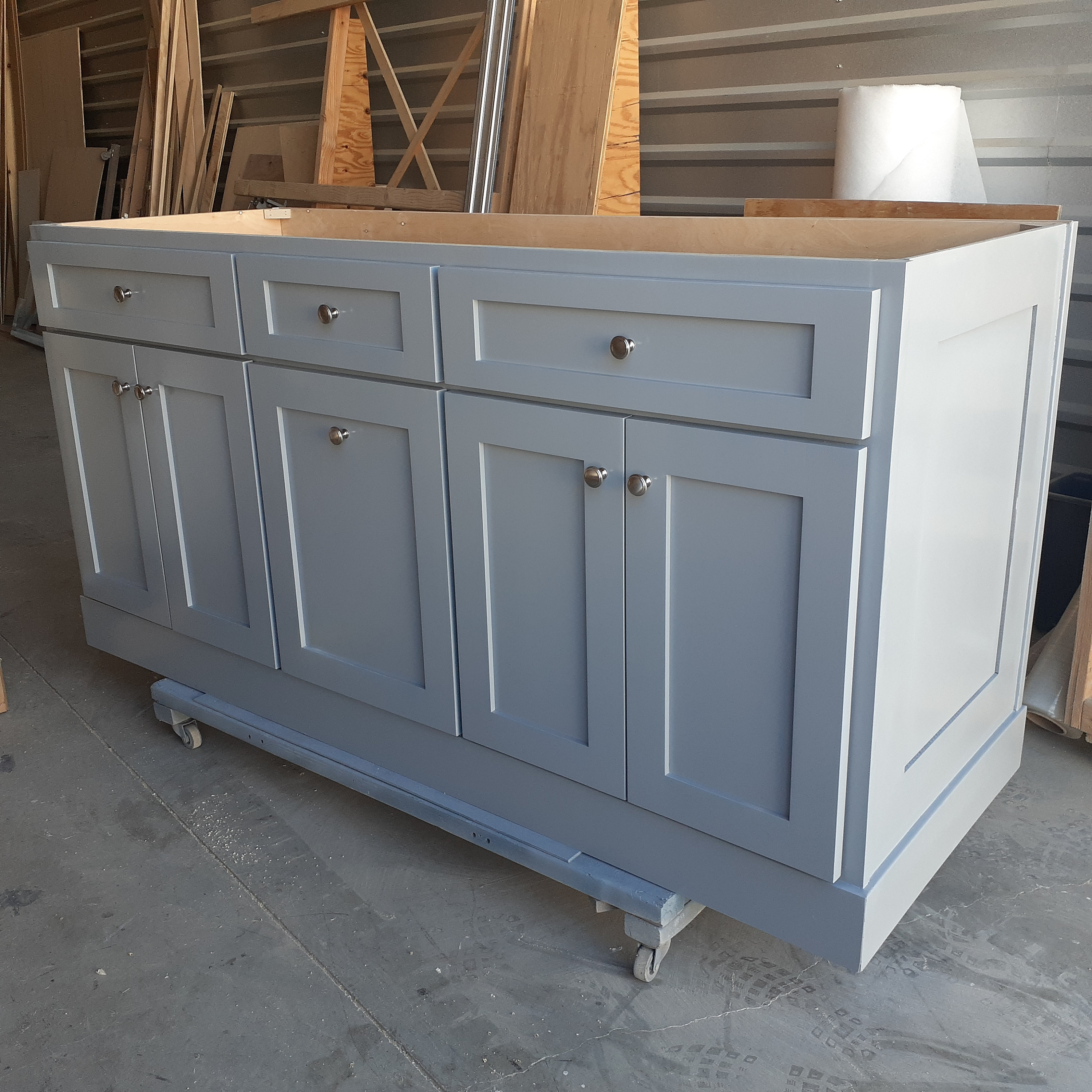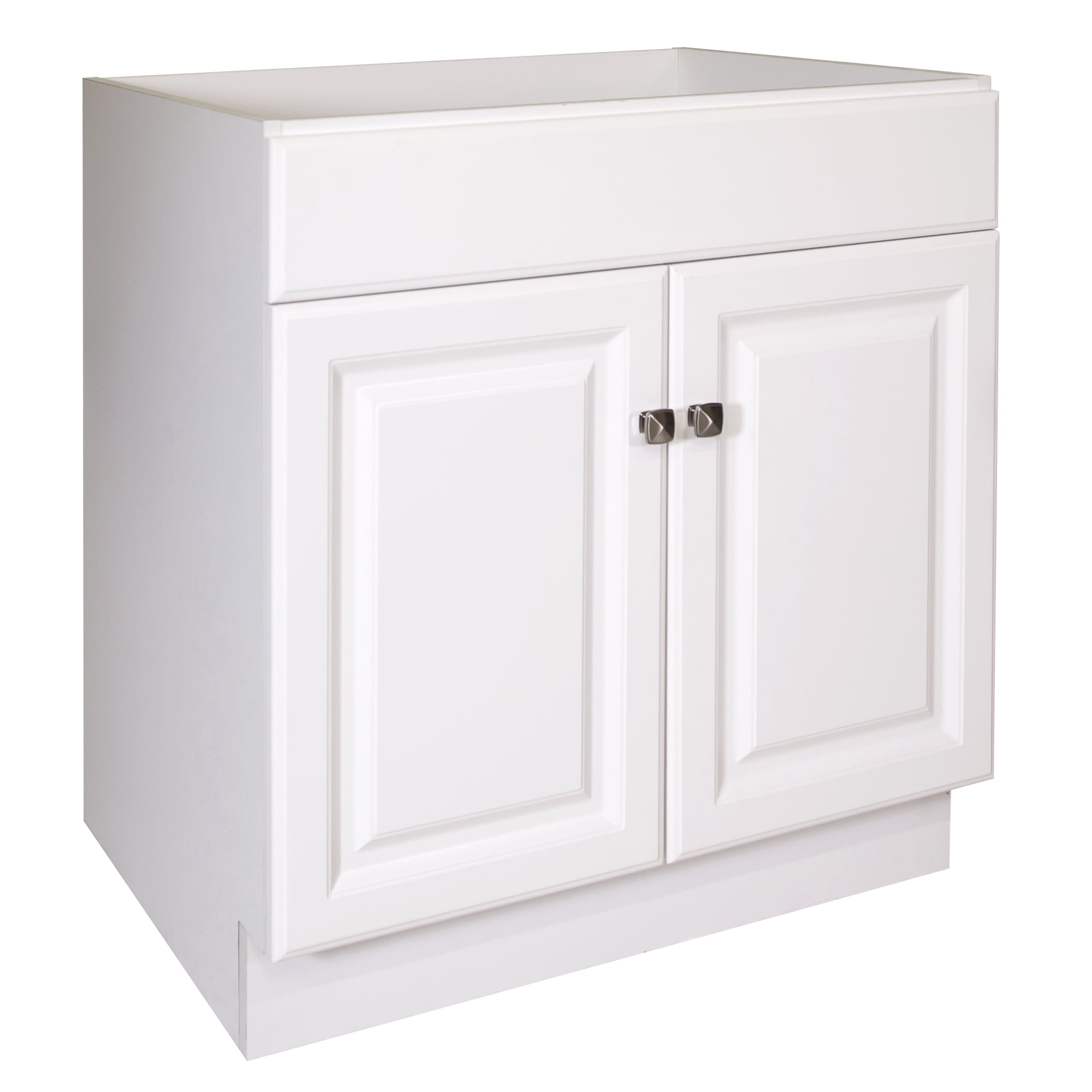Benefits of Unfinished Bathroom Vanities Without Tops

Unfinished bathroom vanities without tops offer a unique combination of cost savings, customization flexibility, and design versatility, making them an attractive option for homeowners looking to create a personalized and budget-friendly bathroom space.
Cost Savings
Purchasing an unfinished vanity without a top can significantly reduce the overall cost of your bathroom renovation. The absence of a pre-made countertop allows you to choose a material that fits your budget and style preferences, potentially saving you hundreds of dollars.
Customization and Flexibility
Unfinished vanities provide a blank canvas for your creative vision. You have the freedom to choose the countertop material, sink, hardware, and even the paint color, ensuring that the vanity perfectly complements your existing bathroom décor.
Design Versatility
Unfinished vanities can seamlessly integrate into various bathroom styles. For a modern aesthetic, consider a sleek, minimalist design with a quartz or granite countertop. A traditional bathroom can be enhanced with a classic vanity and a marble or limestone countertop. For a rustic feel, opt for a reclaimed wood vanity with a farmhouse sink and a butcher block countertop.
Considerations for Choosing Unfinished Bathroom Vanities

Selecting an unfinished bathroom vanity is a great way to personalize your bathroom and save money. However, there are several factors to consider to ensure you choose the right vanity for your needs and preferences.
Choosing the Right Size and Style
The size and style of your vanity should be carefully considered to ensure it fits your bathroom and complements your décor. It is essential to measure your bathroom space accurately before choosing a vanity. Consider the available floor space, the height of the ceiling, and the location of plumbing fixtures.
- Vanity Width: A standard vanity width is 30 inches, but they come in various sizes, from 24 inches to 72 inches or more. Consider the size of your bathroom and the amount of counter space you need. For smaller bathrooms, a 24-inch or 30-inch vanity may be sufficient. For larger bathrooms, you can opt for a wider vanity, such as a 60-inch or 72-inch vanity.
- Vanity Depth: The depth of a vanity is typically between 18 inches and 22 inches. Choose a depth that allows for ample counter space and comfortable access to the sink. Consider the layout of your bathroom and the location of other fixtures.
- Vanity Height: Standard vanity height is 34 inches, but you can find vanities in different heights. If you have limited mobility or are particularly tall or short, you may want to choose a vanity with a different height. A taller vanity can make the bathroom feel more spacious.
- Style: Bathroom vanities come in various styles, from traditional to contemporary. Choose a style that complements the overall design of your bathroom. Consider the colors, materials, and finishes of other fixtures in the room.
Considering Material and Construction
The material and construction of your vanity are important factors to consider, as they affect its durability, longevity, and aesthetic appeal. Consider the following factors when choosing an unfinished vanity:
- Wood Type: The most common wood types for bathroom vanities include oak, maple, cherry, and walnut. Each wood type has its own unique characteristics, such as grain pattern, hardness, and color. Oak is a durable and affordable option, while maple and cherry are known for their beautiful grain patterns. Walnut is a luxurious and expensive wood type.
- Construction: Vanities can be constructed using different methods, such as solid wood, plywood, or MDF (medium-density fiberboard). Solid wood vanities are the most durable and expensive, while plywood vanities offer a good balance of durability and affordability. MDF vanities are the least expensive but are not as durable as solid wood or plywood vanities.
- Finish: The finish of your vanity will affect its appearance and durability. Consider the style of your bathroom and the level of protection you need. A clear coat finish will protect the wood from moisture and stains, while a painted finish can add color and style.
Choosing the Right Countertop Material
The countertop material is a crucial part of your bathroom vanity, as it affects its functionality, style, and durability.
- Natural Stone: Natural stone countertops, such as granite, marble, and quartz, are durable and elegant. They come in various colors and patterns, and they can add a luxurious feel to your bathroom. However, natural stone countertops can be expensive and require regular maintenance.
- Engineered Stone: Engineered stone countertops, such as quartz and granite composite, are durable and low-maintenance. They are available in a wide range of colors and patterns, and they are less expensive than natural stone countertops.
- Laminate: Laminate countertops are an affordable and durable option. They are available in a variety of colors and patterns, and they are easy to clean. However, laminate countertops can be susceptible to scratches and heat damage.
- Solid Surface: Solid surface countertops are non-porous and easy to clean. They are available in a wide range of colors and patterns, and they can be seamlessly joined. However, solid surface countertops can be scratched and stained.
Finishing and Installing Unfinished Bathroom Vanities

Transforming an unfinished bathroom vanity into a stunning centerpiece requires a few essential steps. This process involves sanding, priming, and painting the vanity, followed by installing the countertop, sink, and hardware.
Sanding, Priming, and Painting
Before applying any paint or stain, it is crucial to prepare the surface properly. This involves sanding, priming, and painting, which are essential steps to achieve a smooth and durable finish.
- Sanding: Start by sanding the vanity with fine-grit sandpaper to remove any imperfections or rough edges. This step ensures a smooth surface for the primer and paint to adhere to.
- Priming: After sanding, apply a primer to seal the wood and create a uniform surface for the paint. Priming also helps to prevent the wood from absorbing the paint unevenly, resulting in a more consistent finish.
- Painting: Finally, apply two coats of paint or stain, allowing each coat to dry completely before applying the next. Choose a paint or stain that is specifically designed for bathroom use, as it will be more resistant to moisture and humidity.
Installing the Countertop, Sink, and Hardware
Once the vanity is finished, it’s time to install the countertop, sink, and hardware.
- Countertop Installation: The countertop installation process will depend on the material you choose. Most countertops come with instructions that you can follow. For example, if you are using a laminate countertop, you will need to cut it to size and then secure it to the vanity using screws or adhesive.
- Sink Installation: The sink installation process will also vary depending on the type of sink you choose. If you are using an undermount sink, you will need to cut a hole in the countertop for the sink to fit. Once the hole is cut, you can then secure the sink to the countertop using clips or adhesive.
- Hardware Installation: Finally, install the hardware, such as the faucet, handles, and knobs. This step is relatively straightforward and involves following the instructions provided by the manufacturer.
Tips for a Professional-Looking Finish, Unfinished bathroom vanities without tops
- Use a high-quality paint or stain designed for bathroom use.
- Apply thin, even coats of paint or stain.
- Allow each coat to dry completely before applying the next.
- Use a paintbrush or roller that is appropriate for the type of paint or stain you are using.
- Clean up any spills or drips immediately.
- Use painter’s tape to protect areas that you don’t want to paint.
- Use a level to ensure that the countertop and sink are installed correctly.
Unfinished bathroom vanities without tops offer a blank canvas for personalization, but don’t overlook the potential of functional storage solutions. Consider incorporating bathroom cabinets with double-sided mirror doors to maximize space and create a sleek, modern aesthetic. These cabinets, with their mirrored surfaces, can add a touch of elegance to any unfinished vanity, while providing ample storage for your bathroom essentials.
Unfinished bathroom vanities without tops offer a blank canvas for creativity. While you may need to invest in a countertop, the opportunity to personalize the vanity is worth it. If you’re looking to add a touch of warmth and character to your bathroom, consider crafting a diy bathroom mirror wood frame.
This simple project can elevate the entire vanity, seamlessly blending with the rustic charm of an unfinished top.
